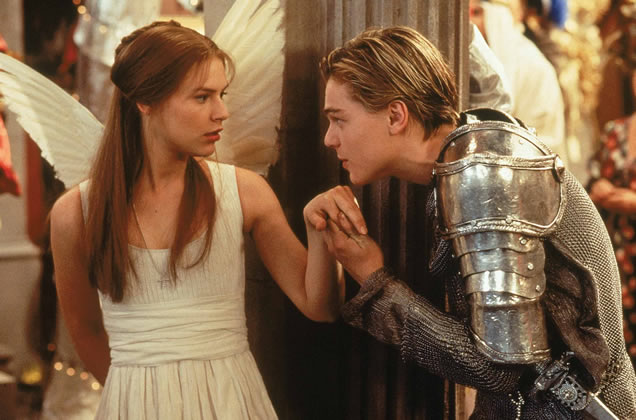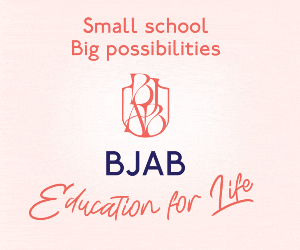And so, with a certain weary inevitability I suppose, given that it is the greatest love story ever told, a new version of William Shakespeare’s Romeo and Juliet has recently opened in cinemas across the world (in time for St Valentine’s Day), and is set to grace Belgium’s screens later in the year.
Italian writer and previous TV director Carlo Carlei is at the helm of the UK-produced film with screenwriter Julian Fellowes (Gosford Park (2001), Downton Abbey (2010-)) adapting to modern sensibilities – Douglas Booth and Hailee Steinfeld star as Romeo Montague and Juliet Capulet, the ‘star-crossed’ lovers to beat ‘em all.
And, while the story may be utterly timeless, Carlei’s version has already come in for the critical carping that one might expect – controversially, the adaptation has eschewed Shakespeare’s original language, concentrating instead on the story’s thematic elements, and turning your back on the Bard’s best feature (that would be his use of English) was never going to be a popular choice. Like Franco Zeffirelli’s adaptation of the play, the film uses the traditional setting of Renaissance Verona but, unlike any of the previous major film adaptations, only follows the plot and uses very little of Shakespeare’s traditional dialogue. According to Fellowes: “Seventy-five per cent of the film is Shakespeare,” he claimed in an interview with The Globe and Mail. “We’ve tightened the narrative, we’ve made certain things clearer that were difficult to understand, but the great speeches are all still in.”
Your correspondent has not yet had the chance to catch it – we shall see.
The motivation may have been to make the film accessible to all, something of which Shakespeare would most certainly have approved – the tragedy, written early in Shakespeare’s career, was and is (along with Hamlet) among the most frequently performed of his plays, concerning two young lovers whose deaths ultimately reconcile their feuding families. It was one of Shakespeare’s most popular plays during his lifetime and, to date, has been the subject of 12 film adaptations (dating as far back as 1900) and even a 2007 animé television series, Romeo x Juliet. The first four versions were silent and only one, made in 1916 (the 300th anniversary of Shakespeare’s death), is believed to still be in existence.
George Cukor was to make the first definitive version in 1936 and, while neither critics nor audiences responded enthusiastically at the time the film, starring Leslie Howard and Norma Shearer, was nevertheless nominated for four Oscars, and has since been accepted as a classic. However, given that Howard was 43 and Shearer 34 at the time of the film’s production, they could hardly have been described as the ‘young’ lovers of Shakespeare’s original story.
Renato Castellani‘s 1954 adaptation was the first to dare to represent the tragic lovers as young – Lawrence Harvey was just 26, and his Juliet, Susan Shentall, was 20 – Castellani’s fidelity paid off in certain quarters, with the film winning the Golden Lion at the Venice Film Festival and voted as best foreign film by the National Board of Review, but, elsewhere, the critical response was distinctly underwhelming. Castellani was heavily criticized for his decision to include interpolated scenes and greatly reduce the major supporting roles, such as that of Nurse, Mercutio (Romeo’s close friend) and Tybalt (his nemesis and the play’s main antagonist), and for much reducing a key scene in Shakespeare’s original, the fatal fight between Romeo and Tybalt.
It was Franco Zeffirelli’s 1968 British-Italian production that was to first bring the Bard back to the masses. Starring teenagers Leonard Whiting and Olivia Hussey, it won Academy Awards for Best Cinematography and Best Costume Design and was also nominated for Best Director and Best Picture. The most financially successful version of a Shakespeare play ever made at the time, it was popular among teenagers, partly because the film used actors who were closer to the ages of R+J for the first time.
Zeffirelli’s film managed to absorb key events and characters from the play into a new composition that nevertheless did not feel compressed or abridged – contextualizing the narrative in the anxieties of the late 1960s, namely such issues as sexual identity and generational conflict (think Vietnam for Verona) linked the film brilliantly to the mores of the original and, in reducing the verbosity and articulacy of the two central characters, provided a clever, realistic take on star-crossed, almost ‘tongue-tied’ lovers.
And so to the tragedy’s last (and perhaps most important) adaptation of the 20th century, Baz Luhrmann’s Romeo + Juliet which, despite its post-modern, quasi-futuristic Verona Beach setting and guns that are branded as ‘Swords’, has strong links to Zeffirelli’s version, both with its visual parallels in terms of mise en scene and costumes, and in the youth and sympathetic nature of the actors (Leonardo DiCaprio and Claire Danes) performing the lead roles.
Like Shakespeare’s, Luhrmann’s version also reflects his era, and, with its urban setting of anarchic gang violence and disintegrating social structures, a political tableau of which Shakespeare would most certainly have approved. Luhrmann’s film was perhaps the first ever to truly give the story back to the masses – with his reworking, Luhrmann spoke clearly to the very late twentieth century: US teenagers rushed to see the film more than once, and adults gave it a positive, sometimes enthusiastic response.
So, shall audiences love “be wasted on somebody, who does not value it” with the latest version of this tale of woe? We shall see, but Romeo and Juliet shall doubtless live again.







